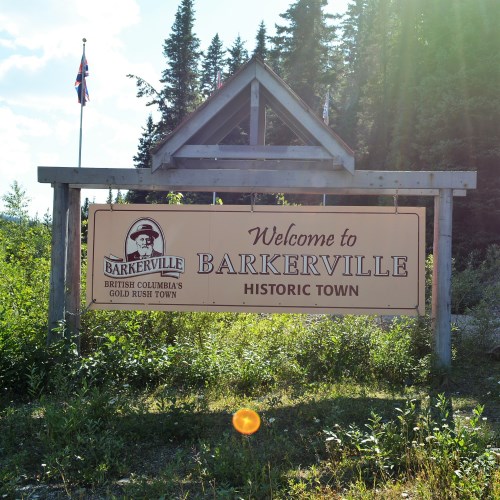The ubiquitous pioneer village has been a staple of elementary school field trips ever since they stopped being, well, villages. As history marched forward we collectively decided the late nineteenth century was the quaintest of times and worthy of both preservation and perpetual reminiscing. Children, we seem to think, are incapable of appreciating the modern world into which they have been born without the shocking revelation that we used to ride horse-pulled buggies, washed our clothes in buckets, and pulled out our rotten teeth with pliers and a shot of whiskey all while wearing petticoats, three-piece suits, and fancy hats.
I find it odd that our nostalgia seems stuck in these pioneer times. My kids are visiting the exact same pioneer villages that I visited when I was a child forty years ago. Shouldn’t my children be touring recreated post-war, industrial towns from the 50s complete with soda shops, full-service gas stations, and ranch houses filled with space-age kitchen appliances that look comical in retrospect? Shouldn’t the petticoats be replaced with poodle skirts, the cowboy saloons with a Royal Canadian Legions, and the blacksmith shops with automotive assembly plants? If the whole point of a pioneer village is to show how times have changed should we not also acknowledge that the benchmark to which that change is measured has also changed?
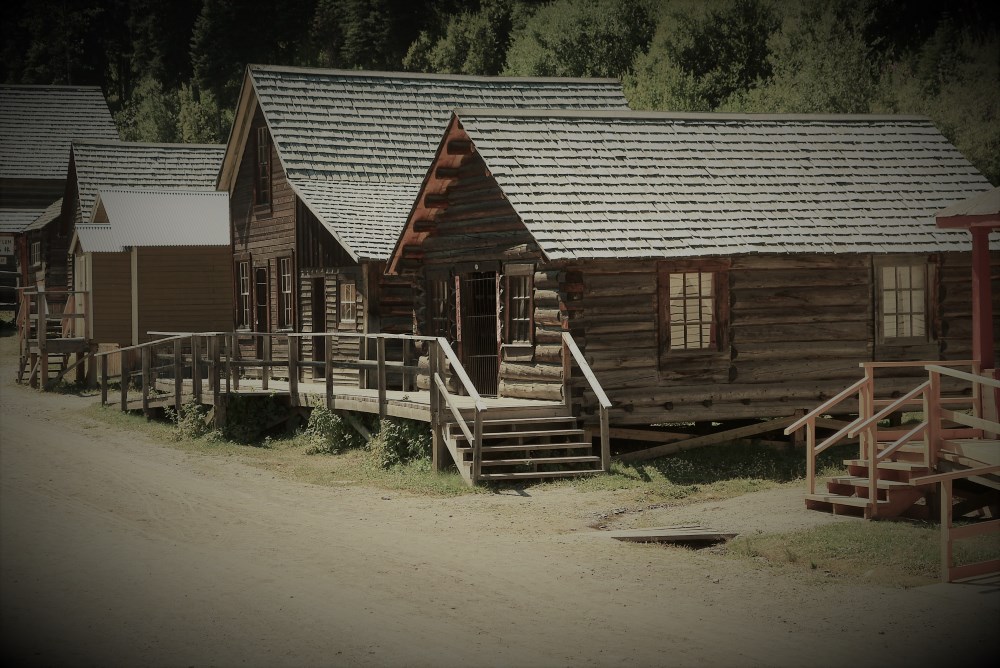
I guess the point I’m clumsily dancing around here is that pioneer villages get boring. They’re all the same. They’re everywhere. Every major city and municipality has one as a key fixture of their tourist attraction offerings. In some places it is the only offering. And they are all … the … same. Oh, they’ve changed a little bit since my childhood days. They now have volunteers walking around in period dress chatting to the visitors to give the impression you’ve actually travelled back in time. And restaurants and saloons are often fully functional businesses. But ultimately, the buildings, the businesses, and the way of life depicted are identical and all from the same time period. From the Maritimes to Upper Canada to the Prairies and into the mountains, it’s always the late 1800s and frankly, it’s all a bit redundant. Or so I thought.
When exploring new parts of the country on our family camping trips we often look for interesting attractions to explore. I’m a big fan of history, despite my ranting above, and surprisingly the kids are more often than not willing to investigate a museum with me so we often find ourselves gravitating to the many historical sites nearby our campsites.
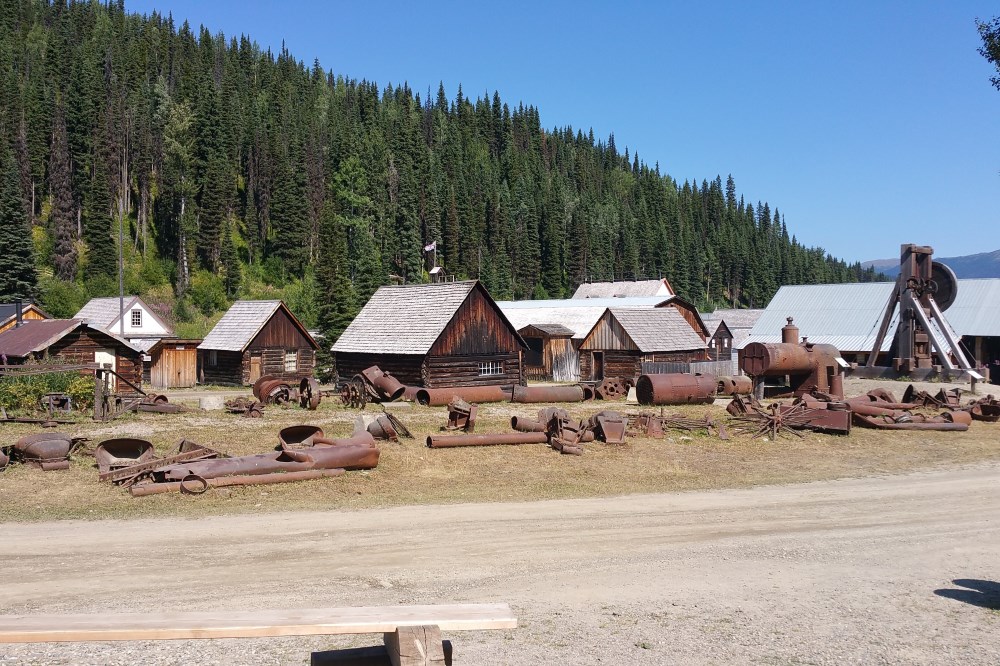
This past summer, however, we made a concerted effort to visit one particular historical attraction that came highly recommended to us by several family members and friends. It’s one thing to enjoy museums, it’s quite another to drive several hundred kilometers out of your way to visit one. It better be pretty spectacular, like Smithsonian spectacular, to justify such efforts. “Pioneer Villages” typically aren’t that spectacular, but in this case, extended family was nearby and the recommendations were strong so why the hell not give it a try. I’m glad we did.
Barkerville Historic Town & Park both is and isn’t a typical “pioneer village”. First and foremost, it’s remarkably isolated. Located in the Cariboo Mountains some eighty kilometers east of Quesnel, British Columbia, a small, interior BC, lumber city itself located an hour and a half’s drive south of Prince George, Barkerville is a fully preserved/restored gold rush town. The lure of the yellow metal is as powerful today for my eight year old son as it was for hundreds of grown men back in the 1850s otherwise I’m not convinced we would have made the effort to visit. The fact I once pretended to work as a geologist helped too; pretty rocks are addicting.
 Barkerville is also quite big. Billed as the largest historical village in Western North America, it’s not your average neighbourhood pioneer attraction. Considering the effort we were making to see it we quickly decided it was worth spending two days taking it all in. To do so we booked a campsite in the nearby campground associated with the site and purchased a special premium package. This Heritage Package included park entry for two days, one ticket for a stagecoach ride through the town, one theatre show, and one gold panning adventure for the four of us. Now, as I have mentioned previously, we decided to camp through British Columbia the summer the province practically burned down. With fires everywhere, tourism was suffering tremendously in this part of the province so Barkerville was charging “pay what you wish” in hopes of promoting attendance in what was a very difficult year. Regular pricing for the package we purchased is $39.25 +GST for adults and $31.25 +GST for children. That’s not a bad price, all things considered, and so we just offered to pay what we would have anyway. Regular two-day admission is only $35 +GST for a family of four which is incredibly good value as you will soon see.
Barkerville is also quite big. Billed as the largest historical village in Western North America, it’s not your average neighbourhood pioneer attraction. Considering the effort we were making to see it we quickly decided it was worth spending two days taking it all in. To do so we booked a campsite in the nearby campground associated with the site and purchased a special premium package. This Heritage Package included park entry for two days, one ticket for a stagecoach ride through the town, one theatre show, and one gold panning adventure for the four of us. Now, as I have mentioned previously, we decided to camp through British Columbia the summer the province practically burned down. With fires everywhere, tourism was suffering tremendously in this part of the province so Barkerville was charging “pay what you wish” in hopes of promoting attendance in what was a very difficult year. Regular pricing for the package we purchased is $39.25 +GST for adults and $31.25 +GST for children. That’s not a bad price, all things considered, and so we just offered to pay what we would have anyway. Regular two-day admission is only $35 +GST for a family of four which is incredibly good value as you will soon see.
Founded in 1858 around Billy Barker’s initial gold strike and rebuilt in 1868 after a fire destroyed the town, Barkerville now consists of 125 heritage and modern support buildings. The town remained active well into the twentieth century with the last permanent residents departing only in 1958. Part pioneer village and part gold rush boomtown, Barkerville has all the typical draws of pioneer life combined with some fascinating attractions wholly unique to its gold mining history. The combination of the two makes for a wonderfully filling and interesting living museum that both kids and adults will enjoy.
 Let’s start with the usual suspects. There’s a church and a schoolhouse and a blacksmith and a saloon and a dentist office with ominous tools and a newspaper with vintage printing equipment and on and on. None of these places are especially unique and you will find them in some form or other at all pioneer villages. That isn’t to say that they are pointless. Each has its own unique, local story such as the Anglican church which was built in October of 1869 and didn’t have a roof when the first snows fell. The resulting eleven feet of snow inside the church left watermarks on the walls visible today.
Let’s start with the usual suspects. There’s a church and a schoolhouse and a blacksmith and a saloon and a dentist office with ominous tools and a newspaper with vintage printing equipment and on and on. None of these places are especially unique and you will find them in some form or other at all pioneer villages. That isn’t to say that they are pointless. Each has its own unique, local story such as the Anglican church which was built in October of 1869 and didn’t have a roof when the first snows fell. The resulting eleven feet of snow inside the church left watermarks on the walls visible today.
 The blacksmith shop, long a staple of such places, held our kids’ attention for over an hour thanks to the friendly blacksmith working away inside. He interacted with the visitors, explaining his trade and the history of metalwork in Barkerville all while creating a steak turner. Since our return home my son has mentioned his desire to have a blacksmith shop in his own home when he grows up. You don’t often get reactions like that from children touring these old-timey places, a testament to the charisma of the artisans at Barkerville.
The blacksmith shop, long a staple of such places, held our kids’ attention for over an hour thanks to the friendly blacksmith working away inside. He interacted with the visitors, explaining his trade and the history of metalwork in Barkerville all while creating a steak turner. Since our return home my son has mentioned his desire to have a blacksmith shop in his own home when he grows up. You don’t often get reactions like that from children touring these old-timey places, a testament to the charisma of the artisans at Barkerville.
The period costumes, conversant staff, and “townsfolk” going about their business really give the whole town an animated feel which I suppose is the purpose of it all. Nowhere was this more enjoyable than during the free guided tour hosted by a prominent citizen of nineteenth century Barkerville. Staying completely in character the entire time, this hour long tour provided a wonderful overview of the town, plenty of history, and many good jokes as well. She even asked men in the tour group to help her up and down any steps she needed to accommodate. And if you were such a chosen man and forgot to take off your hat while helping the lady, you got a right proper chastising for your impropriety! Kids and adults alike with find this tour well worth the time. Note, however, that the tour we took does not include Chinatown. A separate, dedicated tour is available for that portion of Barkerville.
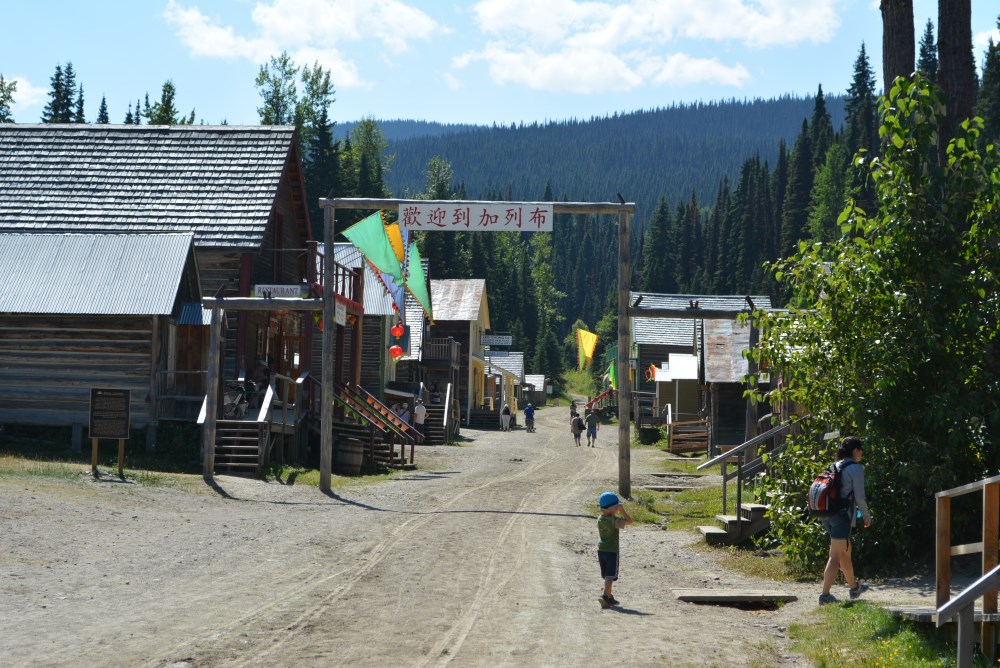
One of the more fascinating revelations about Barkerville was the fact that the entire town is built on stilts, for lack of a better term. Hastily constructed in the northern BC mountains, the town was flooded each spring as the snowpack melted and washed tonnes of tailings into the town. The solution was to build everything up enabling the meltwater and tailings to flow right through town. Over the years and decades the resulting deposition of debris and subsequent further lifting of the buildings has resulted in the current town of Barkerville being fifteen feet above original ground level.
 The special activities that came with our Heritage Package were just as enjoyable. The gold-panning really thrilled my kids though I must admit I was a bit disappointed. Seeing as we were in a legitimate gold rush boomtown, I mistakenly assumed we would actually be panning for gold in the river running next to Barkerville in hopes of striking it “rich” like the town’s founder had. In retrospect, this was a silly assumption. What the activity really involved was a staged gold panning effort outside the gift shop. We were given a pan with a scoop of sediment that was salted with three to four flakes of actual gold. A short panning lesson from a “local” prospector next to a waist-high wooden tub of water resulted in everyone hitting a strike. This was fun and interesting but I really wanted to do the real thing. And I suppose I could have since genuine panning equipment was available for purchase in the gift shop.
The special activities that came with our Heritage Package were just as enjoyable. The gold-panning really thrilled my kids though I must admit I was a bit disappointed. Seeing as we were in a legitimate gold rush boomtown, I mistakenly assumed we would actually be panning for gold in the river running next to Barkerville in hopes of striking it “rich” like the town’s founder had. In retrospect, this was a silly assumption. What the activity really involved was a staged gold panning effort outside the gift shop. We were given a pan with a scoop of sediment that was salted with three to four flakes of actual gold. A short panning lesson from a “local” prospector next to a waist-high wooden tub of water resulted in everyone hitting a strike. This was fun and interesting but I really wanted to do the real thing. And I suppose I could have since genuine panning equipment was available for purchase in the gift shop.
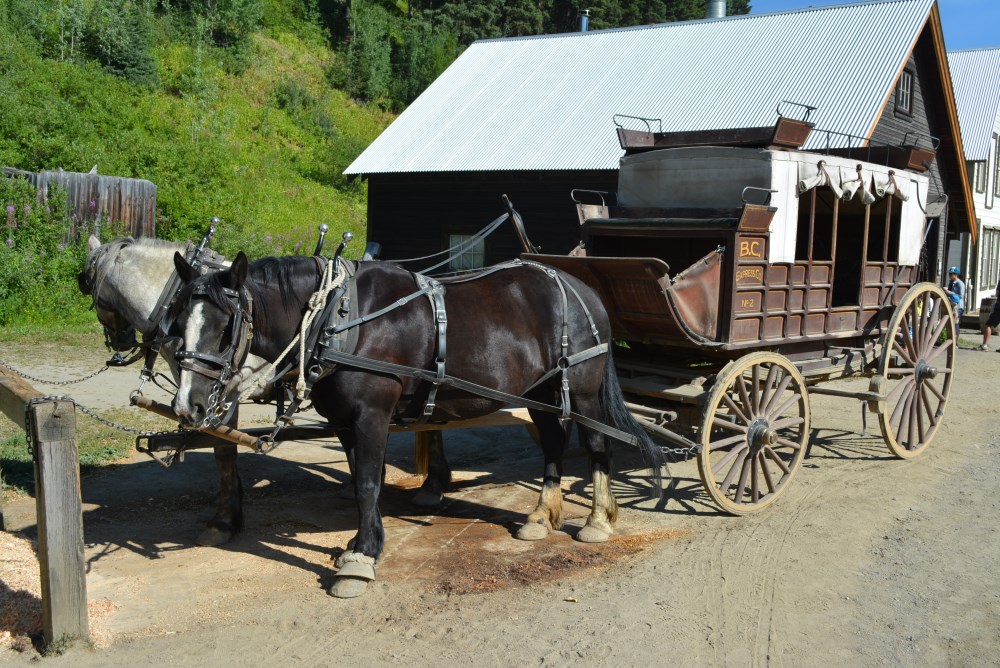
The stagecoach ride was enjoyable but not particularly special. You took your ticket to Barnard’s Express Office and booked yourself a coach ride through town. It was a basic fifteen minute loop through Barkerville including Chinatown and was a unique way to quickly get an overview of the town. The driver didn’t talk much, though, so you’re pretty much just looking at the scenery and all the other guests looking at you. As an included activity in our premium package it was fine but I’m not sure I would have paid for it on its own. Additional rides are available including a much longer one that takes you to a neighbouring “town” to visit an old courthouse to witness a “trial”. We didn’t do that one due to time constraints. Remarkably, even two days isn’t enough to enjoy everything Barkerville has to offer.
 The final activity included in our package was Mrs. McGinley’s Variety Show and it was easily the highlight of our entire visit. Performed by five “residents”, this hour long variety show included singing and dancing and an irreverent, compressed version of Romeo & Juliet. The period-appropriate music mostly told stories about the Cariboo region and its gold-mining history. Practical jokes and audience participation (not for the easily embarrassed) helped make this show well worth the price of admission and I encourage you to see it even if you’ve only purchased regular admission.
The final activity included in our package was Mrs. McGinley’s Variety Show and it was easily the highlight of our entire visit. Performed by five “residents”, this hour long variety show included singing and dancing and an irreverent, compressed version of Romeo & Juliet. The period-appropriate music mostly told stories about the Cariboo region and its gold-mining history. Practical jokes and audience participation (not for the easily embarrassed) helped make this show well worth the price of admission and I encourage you to see it even if you’ve only purchased regular admission.
I’ve only shared a few of the many activities available to guests at Barkerville. It really is incredible how much goes on here. And so many of them are entirely free which makes them all the more enjoyable for a penny-pincher like myself. At five o’clock each afternoon, the Cariboo Amateur Dramatic Association performs street music in town which makes for a rollicking half hour or so of singing and dancing. Again, performers are “locals” and many of them you will have seen on your tours around town beforehand. With rustic instruments and enthusiastic effort, these folk will delight everyone and audience participation is highly encouraged.

Another fantastic freebie I wholeheartedly encourage you to witness is the Waterwheel Show. A genuine, vintage Cornish Waterwheel and flume, this show gives guests a working demonstration of this large, industrial style gold mining device. But it comes with a twist. Rather than simply displaying how the device works, the event is presented as a actual investment opportunity where two locals attempt to convince visitors to buy into their gold claim. The leader of the duo is a shady, fast-talking promoter and her wacky, bumpkin partner is the Waterwheel expert. Together they try their best to sell you on this idea with lots of laughs and sight gags along the way. The sales pitch culminates with a fascinating demonstration of the waterwheel and a miraculous gold discovery. This is a terrific show that would easily be worth paying to see but you get it free with admission.
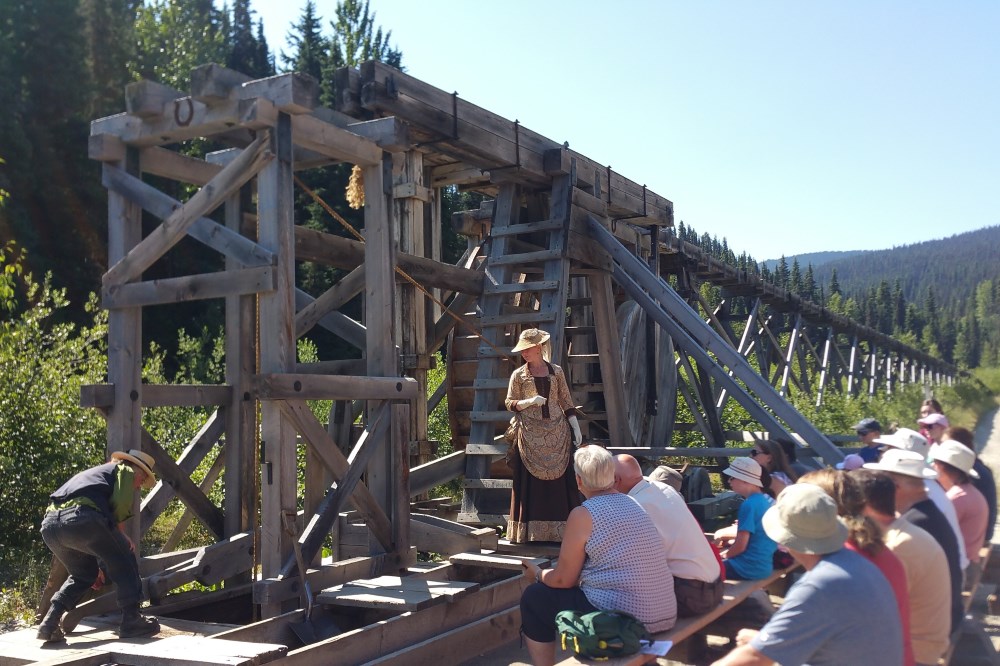
I could go on. Literally. When you arrive at Barkerville your admission comes with an 11 x 17 sheet of paper filled with activities occurring throughout the day. Multiple shows and events start every half hour. You can’t possibly see them all in one day or even two. Having to pick and choose which you attend is a bit disappointing but it makes return visits inevitable. There are also a couple dozen special events held throughout the year, even in the winter. As an out of the way attraction the folks behind Barkerville have gone to great lengths to reward your efforts.
 If I had one complaint about Barkerville Historic Town, and it’s hardly unique to this particular pioneer museum, it’s the over-romanticizing of the time period. This is especially true of the gold rushers. We like to look back through our rosy coloured glasses and view these people as heroic for chasing a dream across oceans and continents and into isolated, virgin places. The truth is, many of these people were desperate and even delusional. Consider one of the characters in the variety show who spoke of a wife and daughter he had not seen in seven years as he chased elusive gold in the new world. That is not romantic. That’s incredibly sad and even despicable. Sure, I’m looking through my own rosy lenses as a modern, stay-at-home father but what kind of person willingly leaves his family for that long? The truth is that these people and the life they lived was grim, difficult, and often selfish. Gleeful singing and campy jokes aside, the truth of a place like Barkerville is far darker than is presented. Of course, gloom doesn’t sell, particularly to vacationers, so who am I too judge.
If I had one complaint about Barkerville Historic Town, and it’s hardly unique to this particular pioneer museum, it’s the over-romanticizing of the time period. This is especially true of the gold rushers. We like to look back through our rosy coloured glasses and view these people as heroic for chasing a dream across oceans and continents and into isolated, virgin places. The truth is, many of these people were desperate and even delusional. Consider one of the characters in the variety show who spoke of a wife and daughter he had not seen in seven years as he chased elusive gold in the new world. That is not romantic. That’s incredibly sad and even despicable. Sure, I’m looking through my own rosy lenses as a modern, stay-at-home father but what kind of person willingly leaves his family for that long? The truth is that these people and the life they lived was grim, difficult, and often selfish. Gleeful singing and campy jokes aside, the truth of a place like Barkerville is far darker than is presented. Of course, gloom doesn’t sell, particularly to vacationers, so who am I too judge.

Your visit to Barkerville will undoubtedly require a replenishment of energy and there are several places in the town itself offering refreshments and meals. From full restaurants to candy shops and a bakery, delicious food and treats are easily found in the heritage buildings giving your rest an authentic flavour. The same can be said of shopping as many of the shops sell wares from jewelry to clothing to souvenirs to photographs in period dress. Often these are made by the artisans managing staffing each building, as was the case with the blacksmith.
 The small town of wells, approximately ten kilometers from Barkerville is a quaint, artsy hamlet with a few places of its own to eat if you want something outside the historic town. For chain restaurants and fast food, you’ll need to go all the way back to Quesnel.
The small town of wells, approximately ten kilometers from Barkerville is a quaint, artsy hamlet with a few places of its own to eat if you want something outside the historic town. For chain restaurants and fast food, you’ll need to go all the way back to Quesnel.
If you really want a special experience, two historic buildings in Barkerville offer bed and breakfast service. We were on a camping trip and stayed at one of the three campgrounds associated with Barkerville, but the idea of spending an entire night within the town itself is an enticing one. Definitely something to put on the “once the kids are out of the house” bucket list for the wife and me. My thoughts on the campgrounds at Barkerville will be coming in a subsequent post so look for that if you’re planning a trip to the area.
WIFI is available at the visitor centre as you enter Barkerville. Reception extends beyond the building a bit but not over the entire park nor to the campgrounds. This is important because you won’t be getting cell service of any kind out there in the boonies. There’s something perfectly fitting about that.
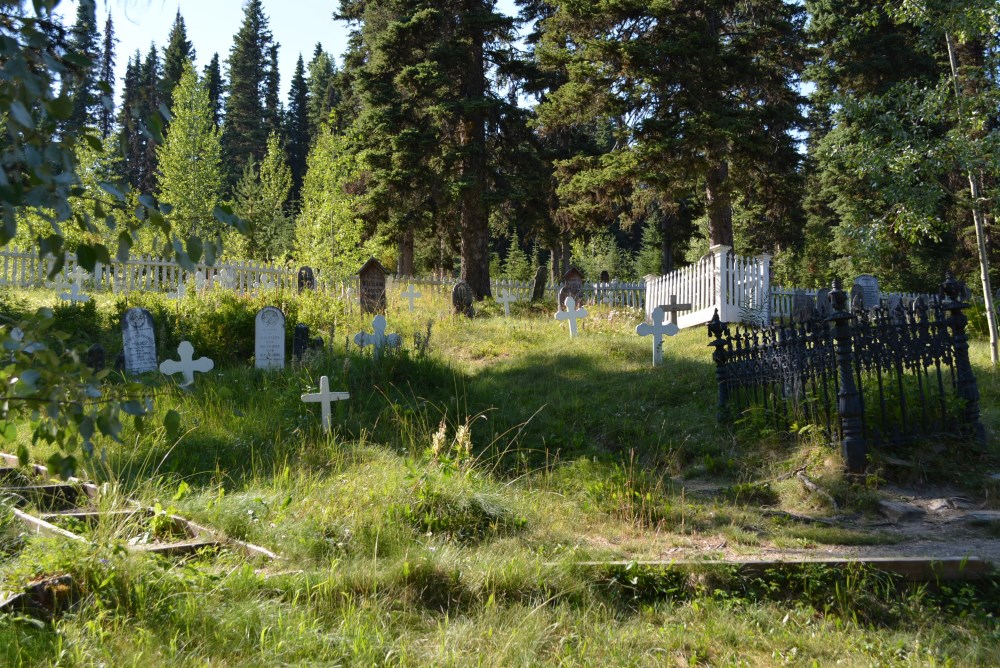
Interesting sights aren’t limited to the historic townsite. Just outside the park you can visit the Barkerville cemetery which offers a charming, if brief, look into the lives of those that lived and died in Barkerville. The inscriptions on the headstones reveal the hometowns from all over the globe that these folks ventured from. Some are even quite elaborate with commemorations I could only dream of having on my own stone. A stroll through this cemetery is recommended for a change of pace during your visit.
my own stone. A stroll through this cemetery is recommended for a change of pace during your visit.
I really enjoyed visiting Barkerville Historic Town and Park and I do not hesitate in giving it 4.5 Baby Dill Pickles out of 5. It’s a terrific pioneer village and vintage gold rush boom town. It’s a shame it’s so hard to get to and not near common tourist hotspots or prominent cities. A great many people will never come close to this wonderful place and that’s a shame. Conversely, it’s a damn treasure to the people living in the Cariboo region of British Columbia. Far more than your typical pioneer tourist spot, Barkerville is an enchanting, living museum with enough to entertain families for days rather than just a couple of hours looking at old buildings and battered antiques. You’ll learn, laugh, and thoroughly enjoy your time at Barkerville and not once regret the extra effort it takes to get there.

